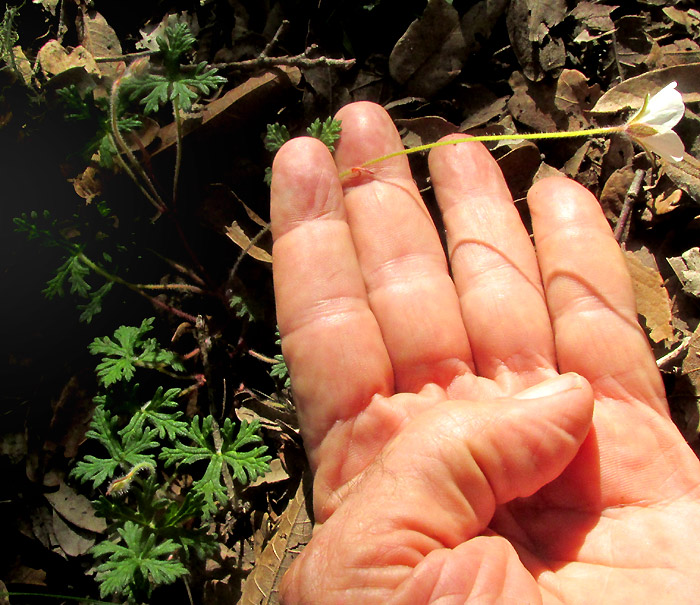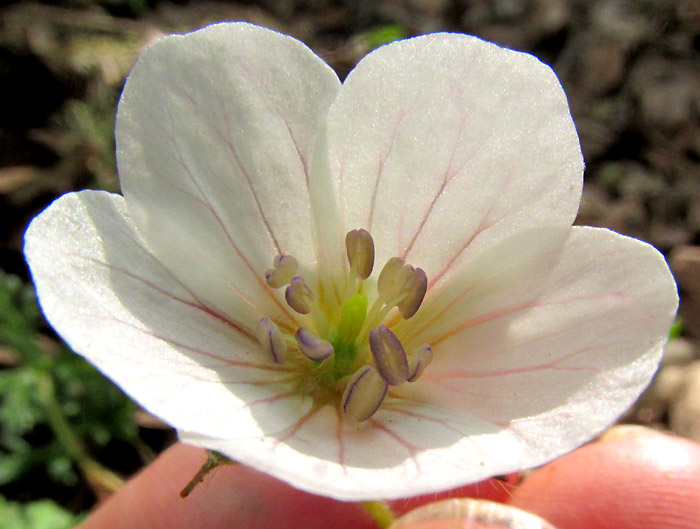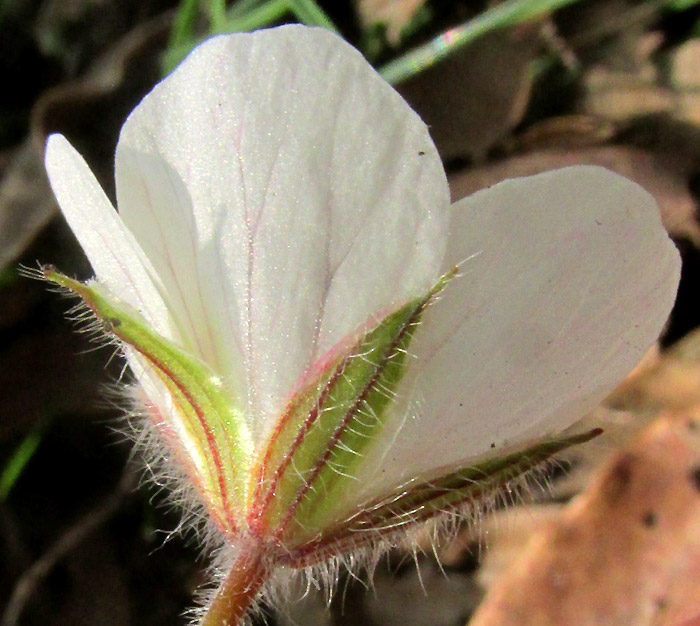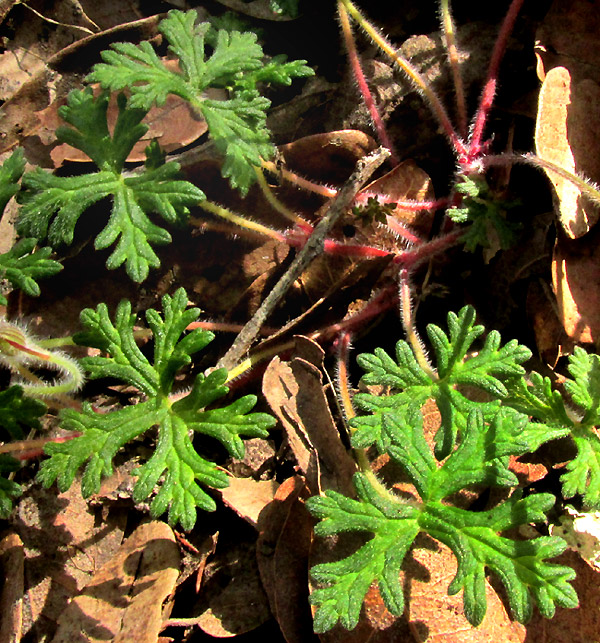Excerpts from Jim Conrad's
Naturalist Newsletter
Entry from field notes dated September 1, 2023, taken in Los Mármoles National Park in the Eastern Sierra Madre mountains, Hidalgo state, MÉXICO, along road between town of Trancas {on maps designated "Morelos (Trancas)"} and Nicolás Flores, not far west of fork in road leading to Puerto de Piedra; oak/pine forest on limestone bedrock; elevation ~2,300m (~7,550ft); ~N20.80°, ~W99.25°
GERANIUM BELLUM

On a forested ridge sometimes grazed by roaming cattle, the above wildflower grew beneath an oak tree, Quercus laurina. To keep the wind from shaking the white flower, blurring it in the picture, the stalk needed to be secured with my hand. That's a shame, for the lone-standing white blossom atop its erect, slender peduncle and pedicel had been a graceful presence in the somber forest.
When you see leaves distinctively shaped as those at the left of my hand, especially associated with large, showy flowers, a good first bet is that you have a member of the Geranium Family, the Geraniaceae. A closer look at the blossom confirmed that:

Species of the Geranium Family usually produce blossoms with the classic formula of five green sepals beneath five distinct petals, and typically either five or ten stamens. Currently the family is home to 5-7 genera, of which here in upland central Mexico we have only two native genera: Geranium with ten anther-bearing stamens, and: Erodium with five stamens bearing anthers. The South African ornamental Pelargonium zonale sometimes escapes, with only two to seven of its ten filaments bearing anthers.
In the above picture, our Geranium flower's ten stamens with purple-tinted white anthers cluster very attractively amid the white petals' pale purplish veins and pale greenish-yellow petal bases.

Even the sepals are unusually attractive with their sleek form, pink veins and pale green color, and long, white, soft hairs.

The leaves are more or less round in overall shape, and deeply divided with 3-5 lobes which themselves are deeply lobed, each lobe and sub-lobe conspicuously grooved with their midveins somewhat sunken into the blade. Note the long-hairy petioles and the plant's tendency to sprawl with reddish stems dividing near the base.
In the 2021 study by José Luis Villaseñor and others entitled "Riqueza y distribución de la flora vascular del estado de Hidalgo, México," seven Geranium species are listed for our upland central Mexican state of Hidalgo. Of those species, the only one whose tall, slender peduncles bear a single white blossom is GERANIUM BELLUM. The vast majority of Geranium species produce inflorescences containing two or more blossoms and many are colored in the purple to rose spectrum. Our plant's single white blossom on a tall, slender stalk is truly special.
Geranium bellum is known by no English name, for it's endemic just to oak-pine forests in the highlands of east-central Mexico. Despite it's small distribution area, the Flora del Bajío describes it as relatively abundant where it does occur. It's a species whose adaptations are exquisitely adapted just to this small area.
The 2014 study by Claudia Valázquez-González and others entitled "Antinociceptive and anti-inflammatory activities of Geranium bellum and its isolated compounds" tells us that among this region's mountains Geranium bellum, known locally as Pata de león, or "Lion's Foot," is widely used in traditional medicine. It's a treatment for fever, pain and various gastrointestinal disorders. The study concluded that "... aerial parts of G. Bellum Rose, as well as the pure compounds isolated from them, possess anti-inflammatory and antinociceptive peripheral activity when locally and systemically administered." Antinociceptive agents are compounds capable of reducing pain without negative effects on consciousness or without producing anesthesia.
Our plant's therapeutic effect isn't surprising, for the 2020 study by Vânia C. Graça and others, surveying literature of the last twenty years and entitled "Bioactivity of the Geranium Genus: A Comprehensive Review," concluded this: "Most studies found in the literature effectively contribute to scientifically validate the beneficial properties of Geranium plants claimed by traditional medicines and medical herbalism and demonstrate that many of them possess evident therapeutic properties."